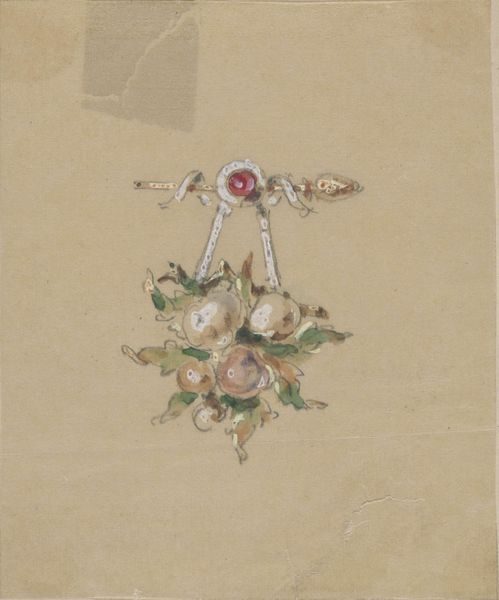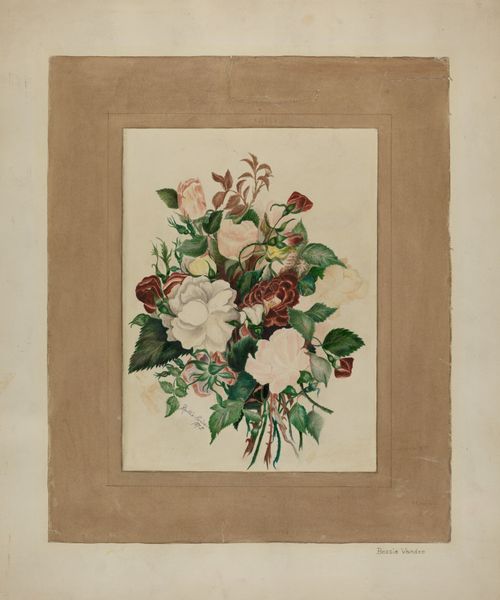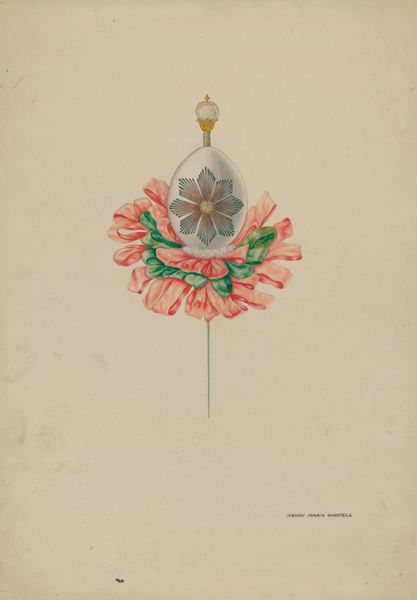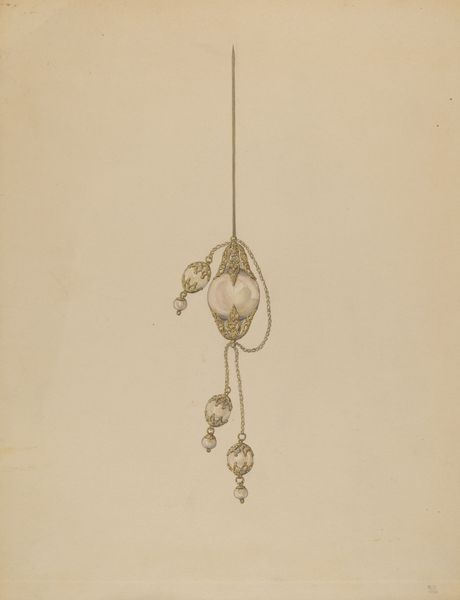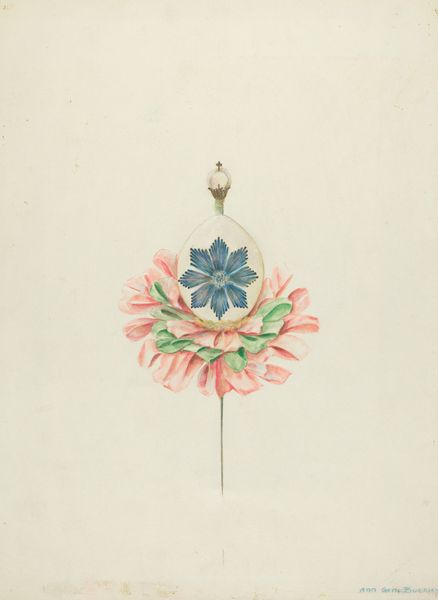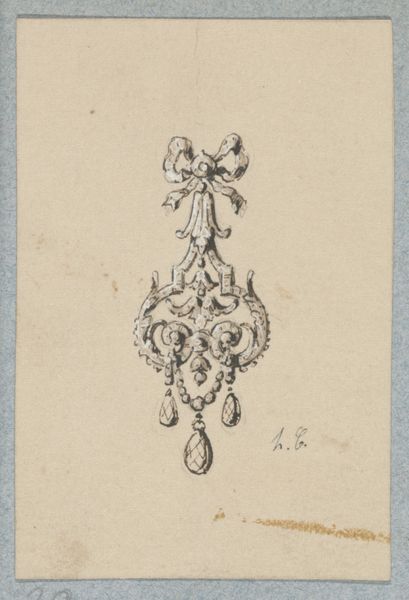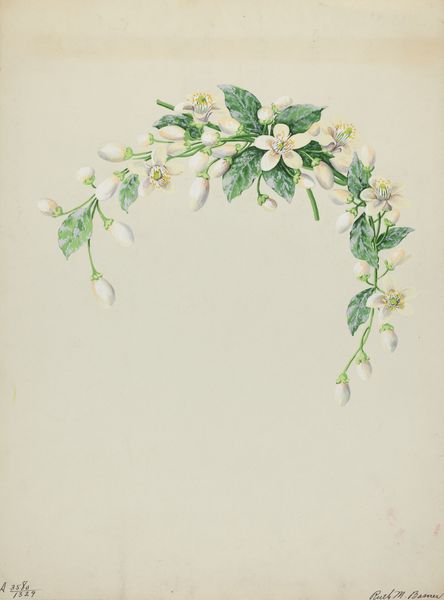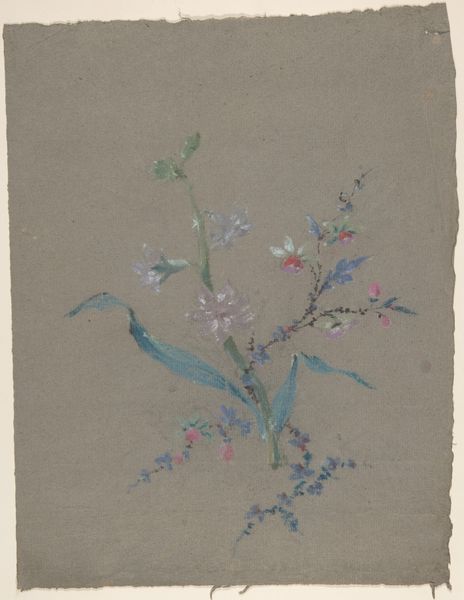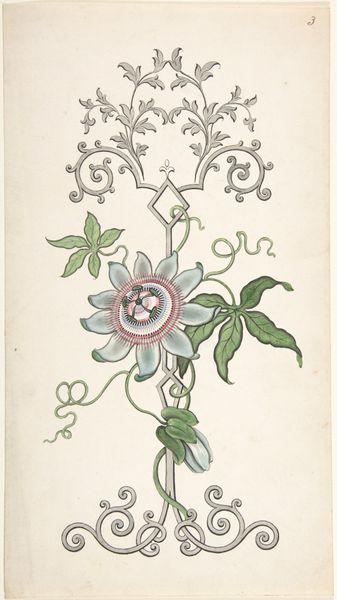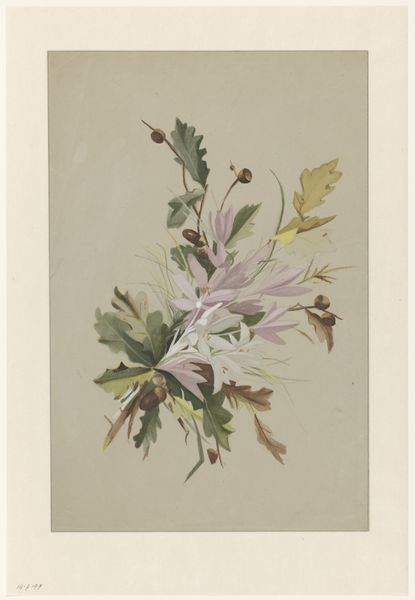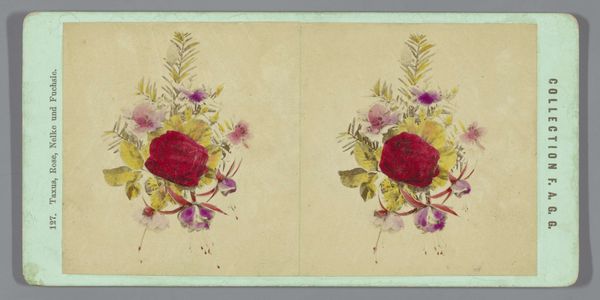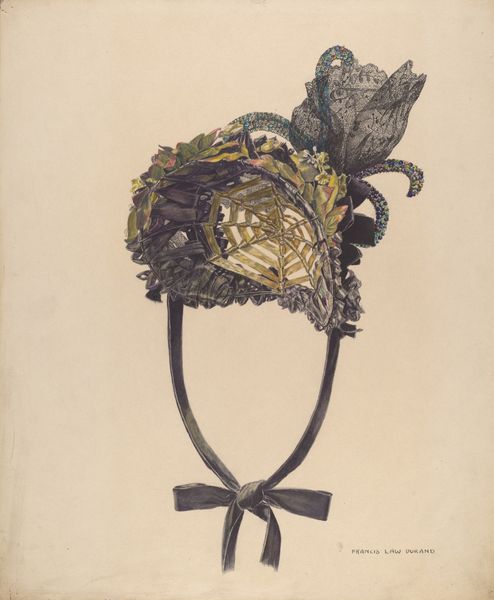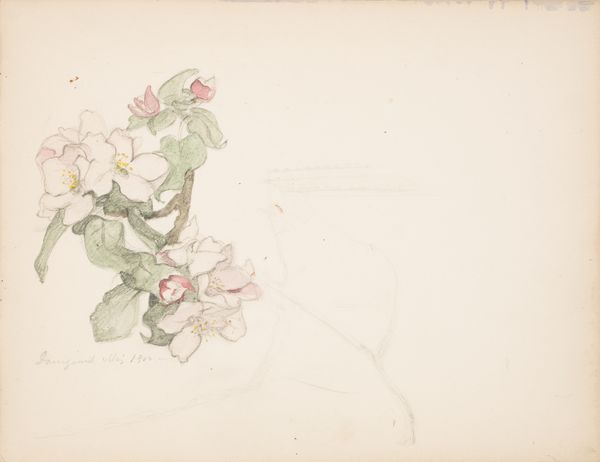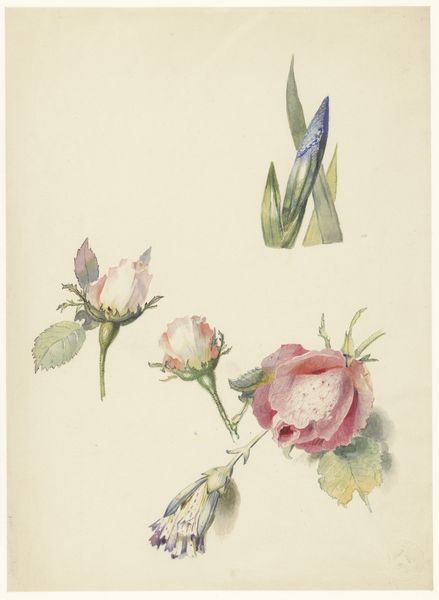
Dimensions: height 99 mm, width 76 mm
Copyright: Rijks Museum: Open Domain
Editor: This is "Two Designs for Brooches with a Fruit Garland" by Henri Cameré, made sometime between 1864 and 1894, using watercolor and colored pencil. I find the delicacy of the design striking; it's so refined. What can you tell me about this piece? Curator: Well, let's consider its context. The late 19th century saw the rise of Art Nouveau. Think about the social aspirations and aesthetic values underpinning that movement. This drawing, while seemingly just a design, speaks to the burgeoning middle class's desire for beauty in everyday objects. Editor: I see, so it’s not just about adornment; it's also about social mobility? Curator: Precisely. The fruit garland motif, rendered in watercolor and coloured pencil, projects both opulence and nature. Who was buying and wearing such brooches, and what statements were they trying to make about their identity and taste? Also, think about the access to the gems. Editor: So, jewelry like this isn’t merely decorative. It’s a signifier… almost like a quiet declaration of identity? Curator: Exactly. The brooches would make such a statement, whether in defiance of traditional aristocratic norms or emulation of that order. This tension defines the visual language. Editor: That's a great point. I never considered jewelry as a form of quiet protest or aspiration. Curator: Art constantly renegotiates power structures. Designs, like these brooches, participate in that discourse by materializing desires, identities, and shifting social values. Editor: I'll definitely look at decorative arts differently now. It shows how intertwined art is with broader cultural and societal narratives. Curator: It’s like jewelry whispers the unspoken stories of its time.
Comments
rijksmuseum almost 2 years ago
⋮
Naturalistic jewellery with recognizable flowers and fruit was in vogue throughout the entire 19th century. The cultivation of exotic variants was a popular hobby among the well-to-do and, moreover, this type of jewellery was easy to wear from day to night. The design of these two bar brooches hardly differs. Cameré may have designed these brooches on commission; the one on the left was eventually accepted (accepté).
Join the conversation
Join millions of artists and users on Artera today and experience the ultimate creative platform.
